Did you ever wonder how all of the geese that are congregating on the golf course are affecting the ecology of the ponds? How about the effect they may have on us or our animals? Considering each goose can produce 1 to 2 pounds of droppings each day, and a typical Canada goose may poop 28 times a day, it doesn’t look good for anyone. In fact, Geese are major contributors to Phosphorus and Nitrogen in ponds. These nutrients come directly from goose excrement and cause pond eutrophication. Pond eutrophication is a natural process that all bodies of water experience. It is the gradual enrichment of nutrients over time. Goose excrement speeds up this process. Leaving extra nutrients for algae and weeds to grow rapidly. A rapid increase in algae can deplete the water of oxygen, damaging the aquatic environment and causing fish kills.
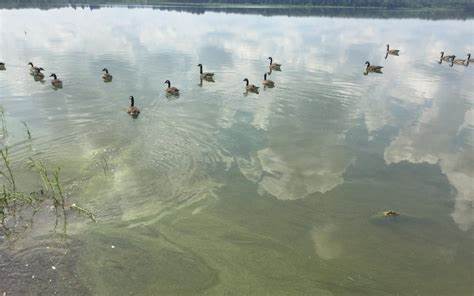
It only takes 1 goose on a 1-acre pond to overload the water with Phosphorus.
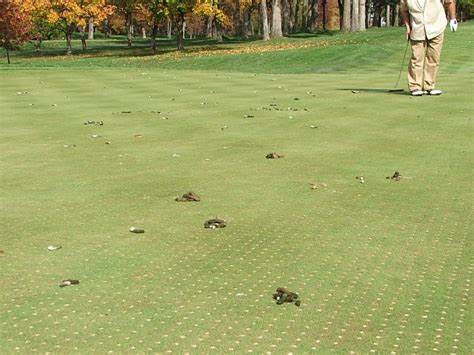
One of the biggest downsides to a Canada Goose presence in our neighborhood is the prolific fecal matter they leave all over walkways. In problem areas, people often have to dance around to avoid stepping in poop! While it’s definitely disgusting, there’s also a hidden danger tied to goose dropping: dangerous diseases and bacteria like E Coli, Salmonella, Histoplasmosis, Campylobacter, Coccidia, and Giardia.
Hosting a population of 20 birds would be the same as having someone spread 20-30 lbs of bacteria-contaminated biohazard on your lawn every day. Most people aren’t aware, but these birds can present a real threat to humans and pets alike.
Pets
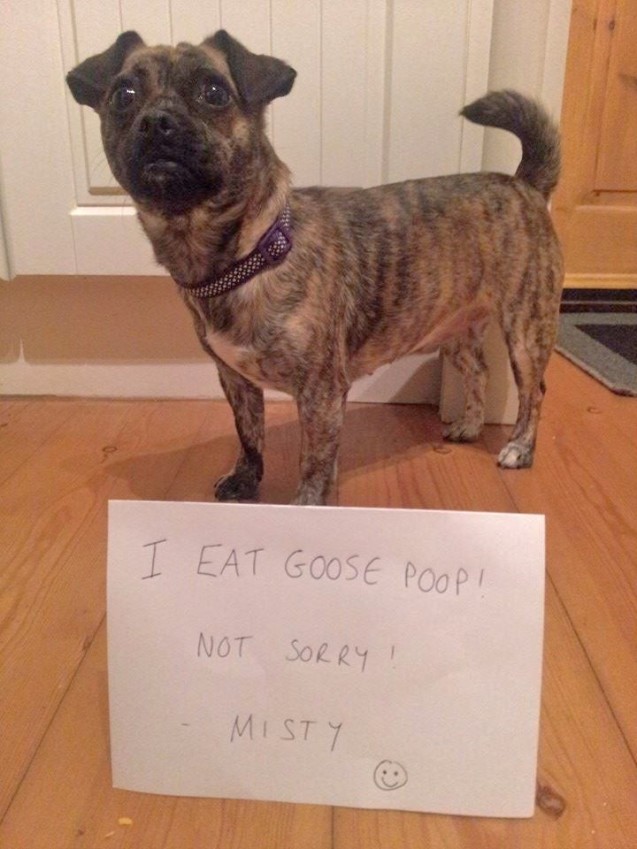
Most healthy pets have a robust immune system. However, pets (especially dogs) enjoy exploring the world through their tongues. If you’ve ever taken your dog to a park with a goose population, you’ve more than likely had to stop your dog from quickly devouring goose droppings. Dogs can easily acquire Coccidia and Giardia from this foul habit. Dogs might also drink water contaminated by goose droppings, magnifying that risk. Always keep your dogs on a leash to prevent them from snacking on unsanitary things, and make sure you provide them with fresh water when they are thirsty.
Domesticated geese and those that live in suburban areas have lost their fear of humans and are far more willing to get physical.
Geese are not defenseless. In fact, they have some surprising weapons in their armory. Their first weapon is courage and intimidation. Canada geese can have a wingspan of five and a half feet and weigh nearly ten pounds. These large birds can be very intimidating, especially with all the noise and commotion they make when attacking!
Geese will bite firmly, although this rarely causes any serious injury. Birds do not have teeth, but geese often have sharp structures known as tomia on their bills and tongues. A bite from a goose can leave scratches and bruises.
Geese also have powerful flight muscles which they use to power vicious strikes with their wings. A strike to the face could cause significant damage and perhaps even a broken nose.
When do geese get aggressive?
Geese get particularly aggressive in defense of their territory, nest, eggs, and young. This behavior is not only directed towards humans of course. Geese readily attack other birds, animals, and even cars.
Geese get aggressive when you approach their nest or goslings. The males are more likely to attack than the females. Non-migratory Canada geese breed in the Spring in the United States, and this is the time when they are most likely to attack.
Canada goose attacks have become more common in the US because these birds are abandoning their traditional migration. Canada geese used to breed in the north and spend their winters in the US.
Reintroduction programs, a warming climate, farming activities, and the development of parks, playing fields, and golf courses have all contributed to some birds choosing to stick around all through the year.
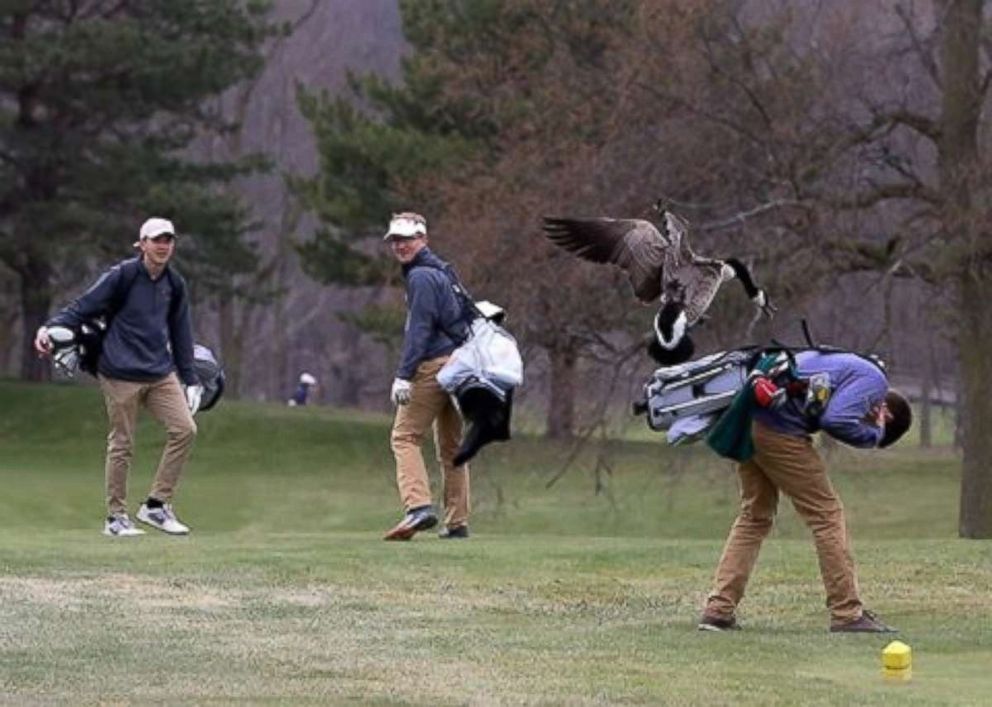
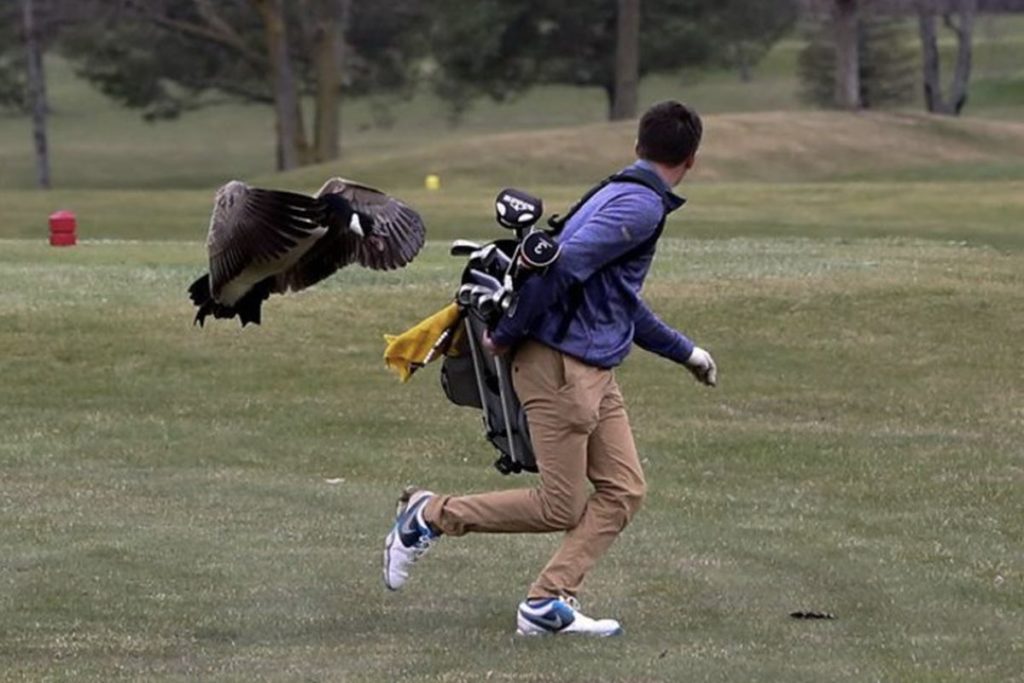

GOLF COURSE
It can be quite a job to keep geese off of a golf course, or out of the grassy areas near the water at a park. Golf course maintenance crews are kept busy with all they have to do to keep the course green and mowed, clean and free from geese and their droppings. Geese are known to forage on the course’s opulent green vegetation. They will either make the course their pit stop or permanent home if there are no goose control products aimed to get rid of geese. Resident geese cause the most damage because they reside in the area all year round. Resident geese attract the migratory geese, so resident geese are considered the main problem. Even low numbers of geese on a golf course will cause damage to the grassy areas and litter the area with their feces. The geese and their feces lessen the visual appeal and can hinder the recreational use of the area in turn this will cost the golf club a lot of money to constantly clean up the grassy area and sanitize the water sources. It is much more cost-effective to install goose control solutions for this problematic issue.
Goose droppings can become hazardous if they are left to accumulate. When the dried droppings are disturbed, there is a dust-like substance that carries over 60 transmittable diseases to humans. The feces will contaminate the grassy areas and the water. Golfers are not very happy stomping in goose droppings or having their golf balls rolling around in the droppings. The game of golf is an expensive sport, and those paying the high prices should not have to worry about picking up their golf ball and having to sanitize their hands each time they touch it. It is important to keep the walkways, cement, and grassy areas feces-free. Instituting proper goose control strategies will lessen the health and nuisance issues they present.
The bottom line is the course has spent a large amount of money to renovate and the geese population (which is very high) wreaks havoc on the course, causing additional expense to keep it maintained. Which in turn can raise fees for the membership.
I hope this helps clarify the reasonings behind why the geese overpopulation on the property needs to be addressed.
Laura Goguet